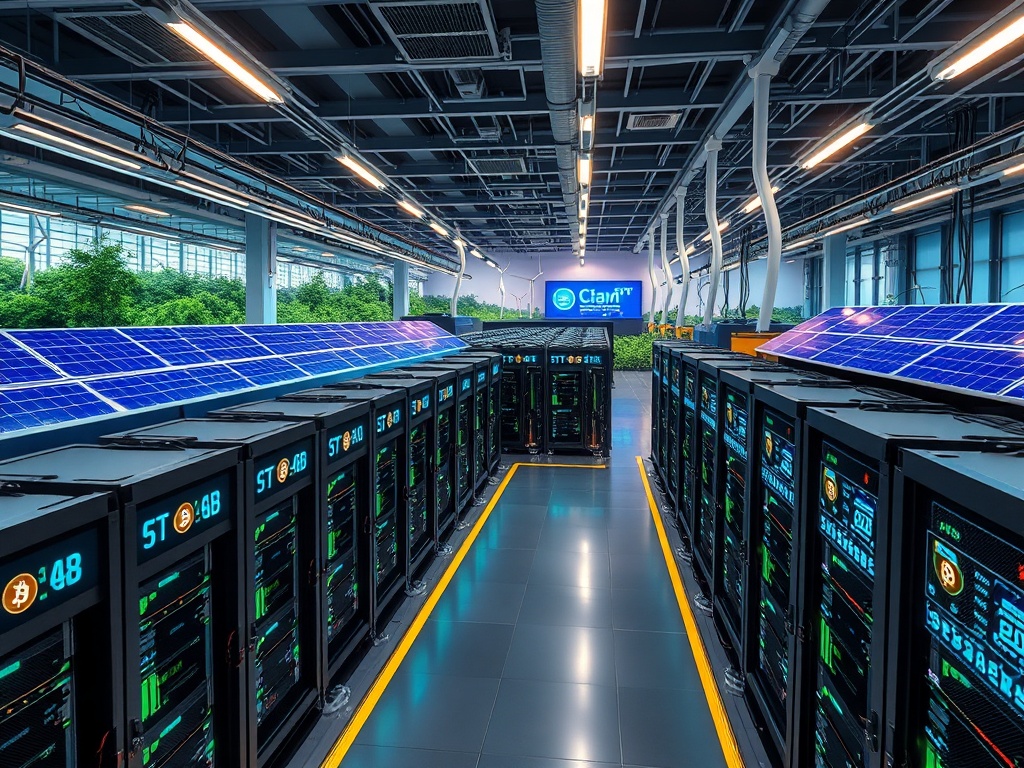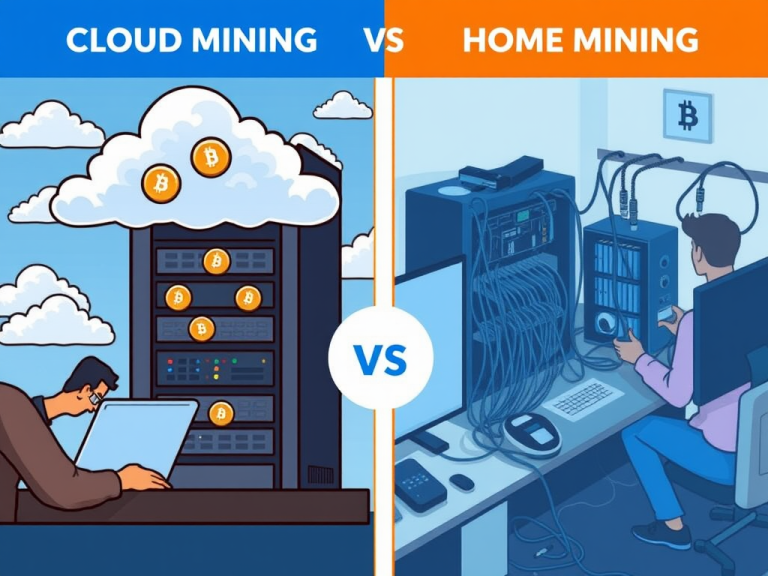
As Bitcoin continues to solidify its position as a leading cryptocurrency, advancements in mining technology are crucial for its sustainability and efficiency. The landscape of Bitcoin mining is evolving rapidly, driven by innovations aimed at improving energy efficiency, reducing costs, and enhancing overall performance. Here’s a deeper look at the key trends shaping the future of Bitcoin mining technology.
1. Sustainable Energy Solutions
With growing concerns about the environmental impact of Bitcoin mining, the industry is shifting towards sustainable energy sources. Traditional mining operations have faced criticism for their high electricity consumption and carbon emissions. In response, miners are increasingly turning to renewable energy options. Solar farms, wind turbines, and hydroelectric plants are becoming integral to mining facilities, particularly in regions with abundant natural resources.
For instance, locations such as Iceland and parts of Canada are capitalizing on their geothermal and hydroelectric energy to power mining operations. These sustainable practices not only lower operational costs but also enhance the public image of miners, appealing to environmentally conscious investors. As governments and organizations push for greener technologies, the trend towards sustainability in Bitcoin mining is likely to accelerate.
2. ASIC Technology Advancements
Application-Specific Integrated Circuits (ASICs) are the backbone of Bitcoin mining, providing the computational power necessary to solve complex mathematical problems. As competition intensifies, manufacturers are developing more efficient ASIC miners that consume less power while delivering higher hash rates. Innovations such as 5nm and even 3nm chips are on the horizon, promising substantial improvements in mining efficiency and performance.
These advancements mean that miners can achieve greater output with lower energy costs, making Bitcoin mining more economically viable. Moreover, the introduction of modular ASIC designs allows for easier upgrades and scalability, enabling miners to adapt to changing market conditions without overhauling their entire systems.
3. Liquid Cooling Systems
Heat management is a significant challenge in Bitcoin mining. Traditional air-cooling methods are becoming obsolete as miners look towards liquid cooling systems. These systems not only improve the efficiency of mining rigs but also prolong their lifespan by reducing overheating. By utilizing liquids that can absorb and dissipate heat more effectively than air, miners can maintain optimal operating temperatures, allowing rigs to run at peak performance for longer periods.
Furthermore, liquid cooling technology can lead to lower noise levels in mining facilities, which is beneficial for operations located near residential areas. As this technology becomes more accessible, we can expect to see a wider adoption in the mining community.
4. Integration of AI and Machine Learning
Artificial intelligence (AI) and machine learning are making their way into the Bitcoin mining sector, revolutionizing how operations are conducted. By analyzing vast amounts of data, AI can optimize mining operations, predict market trends, and enhance decision-making processes. This technology can help miners identify the best times to mine and sell their Bitcoin, maximizing profitability.
Additionally, AI can be employed to monitor system performance in real-time, detecting anomalies and potential failures before they lead to costly downtimes. By leveraging AI, miners can operate more efficiently and reduce operational risks, allowing them to stay competitive in a rapidly changing environment.
5. Decentralized Mining Pools
The future of Bitcoin mining may also see a rise in decentralized mining pools. These pools enable miners to join forces without relying on a central authority, promoting greater fairness and transparency. Centralized mining pools can lead to issues such as unequal distribution of rewards and vulnerability to attacks.
Decentralized mining pools, on the other hand, distribute rewards more equitably among participants and align incentives better. This approach can reduce the risks associated with large, centralized mining operations and foster a more inclusive environment for smaller miners. As more miners seek community-driven alternatives, decentralized pools are likely to gain traction.
6. Regulatory Developments
As governments around the world start to take a closer look at cryptocurrency regulation, Bitcoin mining will inevitably be affected. Regulatory clarity can lead to stability in the market, encouraging more institutional investment. However, miners will need to adapt to new regulations regarding energy use, taxation, and reporting.
Countries like China have already implemented strict regulations on mining, leading to significant shifts in mining operations and investments. Miners in regions with favorable regulations may attract more business, while those in heavily regulated areas may face challenges. Staying informed about global regulatory trends will be crucial for miners looking to navigate this evolving landscape.
7. Enhanced Security Protocols
With the increase in mining operations, the security of these systems becomes paramount. Future trends indicate a focus on enhancing security protocols, utilizing advanced cryptographic methods and blockchain technologies to protect against attacks. Miners will need to adopt more sophisticated security measures to safeguard their operations from hacking and other cyber threats.
Blockchain technology can facilitate the development of more secure, decentralized systems for managing mining operations. By employing smart contracts and other blockchain features, miners can enhance transparency and accountability, reducing the risk of fraud and ensuring fair practices.
8. Community Engagement and Governance
As the Bitcoin mining ecosystem matures, the role of community engagement and governance will become increasingly important. Miners, investors, and users will need to collaborate on best practices for sustainable mining and address ethical considerations related to energy consumption and environmental impact.
Decentralized governance models, where decisions are made collectively, may emerge as a way to align the interests of diverse stakeholders. By fostering a sense of community and shared responsibility, the Bitcoin mining industry can build a more resilient and sustainable future.
Conclusion
The future of Bitcoin mining technology promises to be dynamic and transformative. As miners embrace sustainable practices, leverage advanced technologies, and adapt to regulatory changes, the industry is poised for significant growth. Staying ahead of these trends will be essential for miners looking to thrive in an increasingly competitive landscape.
With innovation at the forefront, Bitcoin mining is not only evolving but also becoming a more responsible and efficient endeavor. As the industry progresses, it will be fascinating to observe how these trends shape the future landscape of Bitcoin mining, ensuring its place in the digital economy for years to come.






